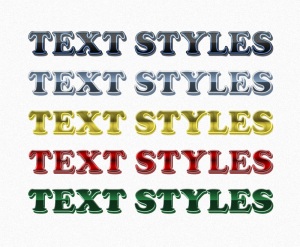Our prompt for this week is, “Write a blog entry reflecting on what you have come to understand about the design of instruction that primarily or exclusively employs text and hypertext to teach. How could this format be helpful to students? Do the restrictions help or hurt in terms of not being able to use video and images? How does this format impact you as a designer of instruction?”
I think the main point that I learned this week is that before implementing a design, the designer must make time to think about the overall text to be designed. What is the purpose of the design and why is it being created? Who is going to access the design? How are they going to access the design? Is the text written at a level appropriate for the target audience? As you can see from these questions, one shouldn’t just jump into a text design and hope for the best. According to Hartley (2004), when designing text there are multiple aspects that must be considered: page size, font style, size, and color, the structure and organization of the text, the actual words used to make the text, i.e., how easy or difficult it is to read and understand the text, and the accessibility of the text.
Fonts should be easy to read. The text shouldn’t be written in all italics, bold, or capital letters. Colors should complement each other and be easy to read together. For example, use light letters on dark backgrounds or dark letters on light backgrounds; not light on light or dark on dark as that is very hard on the reader’s eyes. There should be a clear structure applied to the document and the structure should be easy to follow. If used, headings and subheadings along with bolded and underlined words should supply the reader with learning cues as to the areas of focus in the text. In order for a text to be helpful and effective for the learner, each of the above questions as well as all of components discussed by Hartley (2004) have to be taken into account before, during and after design implementation. Planning and revising are key elements of an effective and efficient design.
Other questions to consider during text design are, is it better to provide a navigational structure, such as an outline or concept map? Or is it better to let the learner dictate the learning path (Shapiro & Niederhauser, 2004)? One of the benefits of designing with hypertext is that learners have the ability to click through in any order and go back and forth between items. During the design, the designer must consider how they want the learner to progress through the document. Is the purpose to let the learner explore the topic on their own and amass a deeper understanding or is the purpose to pull out facts? If it’s the latter, Shapiro & Niederhauser (2004) state that defeats the purpose of designing with hypertext.
The authors also state that it’s crucial to test the design with a small sample of the target audience and to watch how they navigate the text to determine if there are blocks or confusions that arise. They recommend checking for understanding and comprehension along the way (Shapiro & Niederhauser, 2004). Ask your test sample if they understood the learning goal and if the text was clear and easy to follow. Ask them if the text made sense. Ask them about their preferences. An example would be if the absence or presence of a concept map or outline would help or hinder their learning.
During the exercise this week, I realized that a benefit of designing primarily in text is that with simple concepts text can be an easy way to explain uncomplicated topics. Using a well-designed step-by-step written instruction set provides learners with a clear learning path. Learners begin at step one and follow through to the end. With this though, the onus is on the designer to ensure that no steps are skipped and that that instructions are understandable, in the correct order, and are easy to follow. Text also allows students with visual disabilities to follow along with the assistance of text-to-speech or screen reader technologies.
A major disadvantage of relying solely on text is that any learner, especially those with learning disabilities may not be able to understand the text, especially if the topic is difficult or advanced. In those cases, supplying additional explanations in other media formats, such as with video, audio, or pictorial explanations, would help them to better navigate through and understand the concept. For example, with a complicated topic, the learner could watch a video tutorial and follow along with the steps. Long passages of text can be interspersed with images to break up the monotony. Images and audio can supply navigational tools and help the reader progress through the text.
After this week’s experiment, I would not design using only text. I think it limiting to the learner and to the instructional product to rely on only one form of media. In an optimal situation, I would first consider the learning goal, the audience, and the learning environment before deciding on the best types of media to relay the information.
References
Hartley, J. (2004). Designing instructional and informational text. In D. H. Jonassen (Ed.), Handbook of research in educational communications and technology (2nd ed.) (pp. 917-947). Mahwah, N. J.: Erlbaum.
Shapiro, A., & Niederhauser, D. (2004). Learning from hypertext: Research issues and findings. In D. H. Jonassen (Ed.), Handbook of research in educational communications and technology (2nd ed.) (pp. 605-620). Mahwah, N. J.: Erlbaum.


